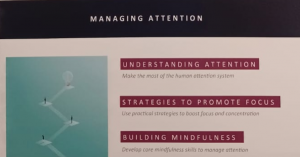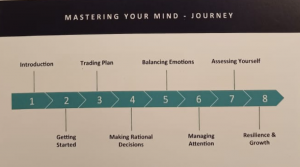
Trading Psychology Part 2
Trading bias, now you have a better understanding once you went through part 1 in an earlier blog. You have an understanding of the most common ones.
When your capital is at risk, as a trader you get easily influenced by your behavioral biases. Trading is about taking measured and calculated risks and decision-making. You should better understand your strengths and weakness. Let’s discuss some more important trading biases you should know and improve yourself as a trader.
Hindsight bias:
Trading is about “ the hard right edge”.Everything looks simple and easy in hindsight and you knew it. But let’s understand that it was not so evident and clear before it happened. To deal with hindsight bias write down your rules and logic for trade before you make a trading decision.

Familiarity bias:
Trades like to use familiar trade sets up and strategies, but it is tough to change your habits when market conditions change. If a moving average system works in trending markets it will not give the same desired results in a sideways consolidation phase. Traders need to be flexible and adapt to changing market conditions. It will help you if you are looking for strategies according to market conditions. Retracement strategies will work in range-bound markets, moving averages in trending markets and momentum strategies will work in a fast-moving market.

Loss aversion:
Loss aversion is well-known among traders, but very often traders tend to ignore the same. What was working profitably in the backtesting stage, and you knew the end result of the back-tested strategies, might be difficult to implement in real trading. We tend to react more negatively to a loss than positively to smaller profits or a favorable outcome. We are happy and positive with smaller gains instead of bigger gains.

Self-serving bias:
This is the habit of taking credit for a favorable and profitable outcome but blaming others when the trade outcome is negative or a loss-making trade. In other walks of life, we tend to attribute favorable results to our skills and hard work and a negative outcome to bad luck. The quality of the decision is judged on the outcome which is not the correct way to judge. Good decisions often lead to unfavorable outcomes and a good outcome could be the result of a bad decision. Be careful to take credit and pat on your back. Markets and financial instruments are a lot more random than we think about them. Think in terms of probabilities and not on an absolute basis.
To overcome trading bias, trade smaller quantities or lot sizes. When you have a comfort level in a position based on the size and risk involved, you will have less stress. Write down your bias on a piece of paper. This will make you aware of the basis. Remove noise don’t overload yourself will social media information. Get into the habit of taking time and making slower decisions and don’t be impulsive. Look for confronting arguments, and be your own devil’s advocate.





